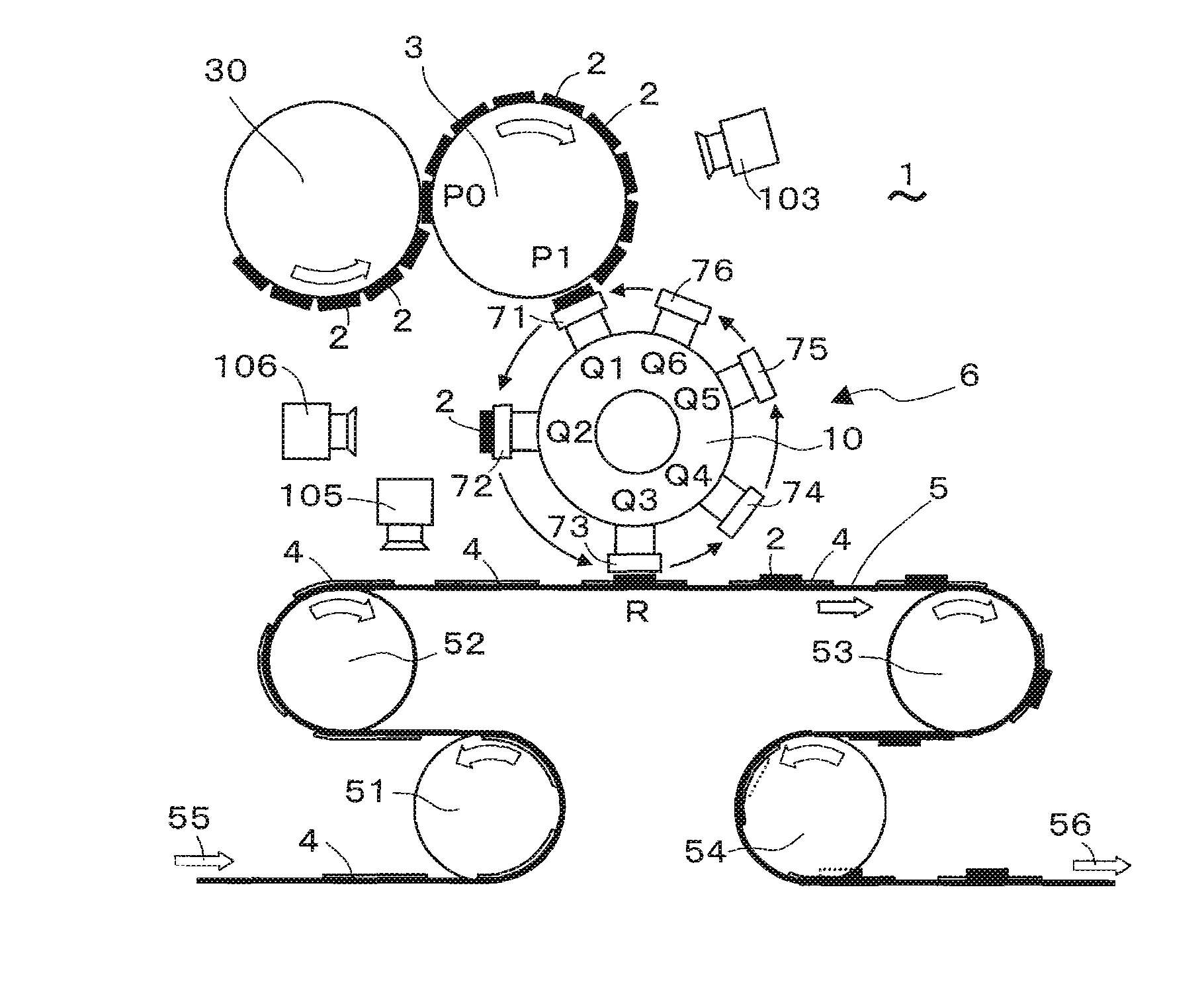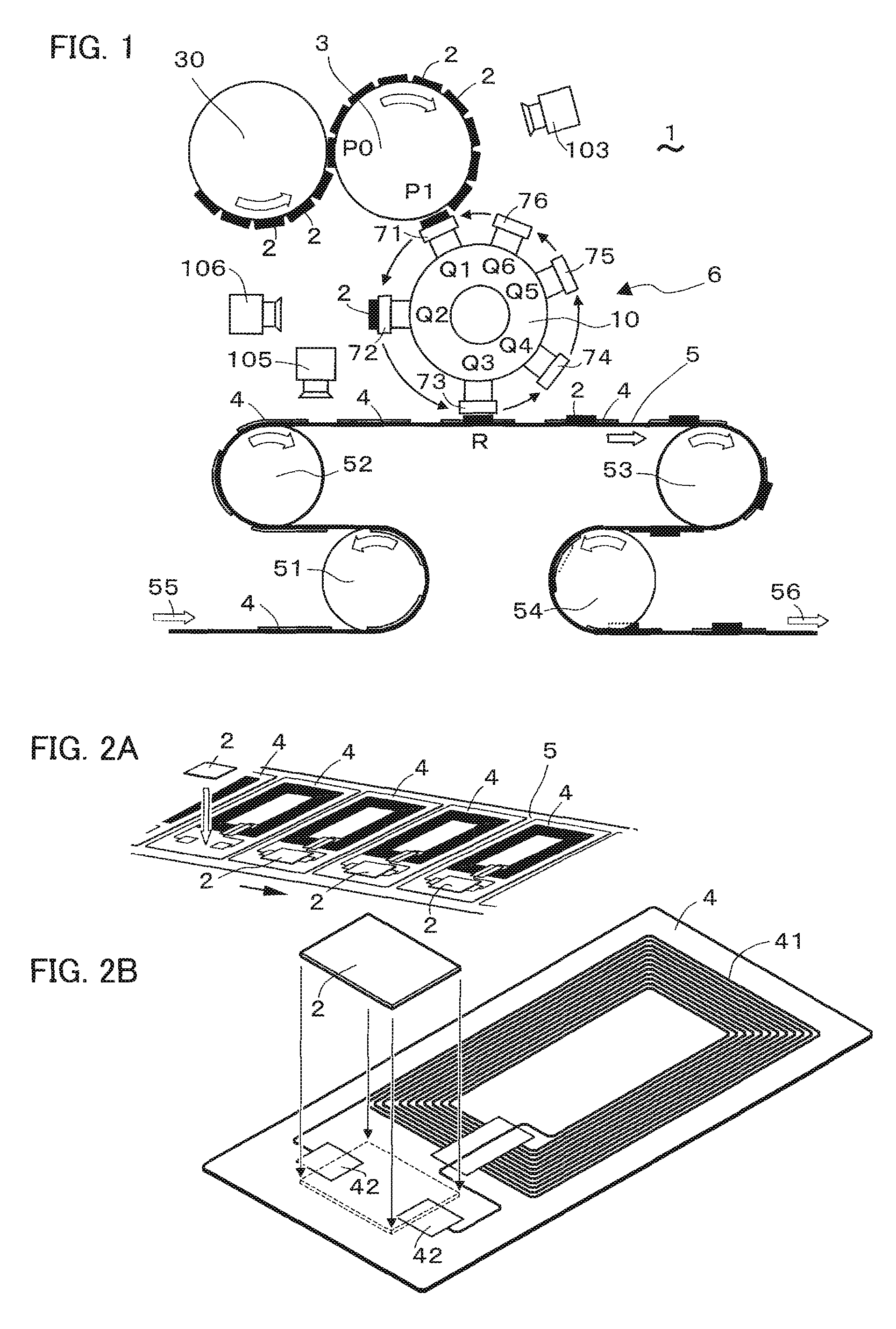Random-period chip transfer method
a chip transfer and random period technology, applied in the direction of electric programme control, program control, instruments, etc., can solve the problems of troublesome replacement of cams, failure to follow irregular changes of pitch, and difficulty in replacing cams, so as to improve the productivity and quality of ic cards or rf tags
- Summary
- Abstract
- Description
- Claims
- Application Information
AI Technical Summary
Benefits of technology
Problems solved by technology
Method used
Image
Examples
Embodiment Construction
[0033]FIG. 1 shows a chip transfer apparatus 1 embodying the present invention. The transfer apparatus 1 includes a first carrier 3, a second carrier 5 and two transfer engines 6. The first carrier 3 carries chips 2 on it and feeds the carried chips. The second carrier 5 carries works 4, onto which chips 2 can be transferred. Each transfer engine 6 includes three coaxial revolvers 10. The coaxial revolvers 10 of the two transfer engines 6 revolve coaxially with each other around a horizontal axis CL (FIG. 6B). Each coaxial revolver 10 of one of the engines 6 is fitted with an end-effector 71, 73 or 75. Each coaxial revolver 10 of the other engine 6 is fitted with an end-effector 72, 74 or 76. Each of the end-effectors 71-76 receives a chip 2 from the first carrier 3 and transfers the received chip onto a work 4 on the second carrier 5.
[0034] The end-effectors 71-76 are arranged at intervals in a circle coaxial with the horizontal axis CL (FIG. 6B). While the end-effectors 71-76 are...
PUM
| Property | Measurement | Unit |
|---|---|---|
| speed | aaaaa | aaaaa |
| speeds | aaaaa | aaaaa |
| revolving speed | aaaaa | aaaaa |
Abstract
Description
Claims
Application Information
 Login to View More
Login to View More - R&D
- Intellectual Property
- Life Sciences
- Materials
- Tech Scout
- Unparalleled Data Quality
- Higher Quality Content
- 60% Fewer Hallucinations
Browse by: Latest US Patents, China's latest patents, Technical Efficacy Thesaurus, Application Domain, Technology Topic, Popular Technical Reports.
© 2025 PatSnap. All rights reserved.Legal|Privacy policy|Modern Slavery Act Transparency Statement|Sitemap|About US| Contact US: help@patsnap.com



